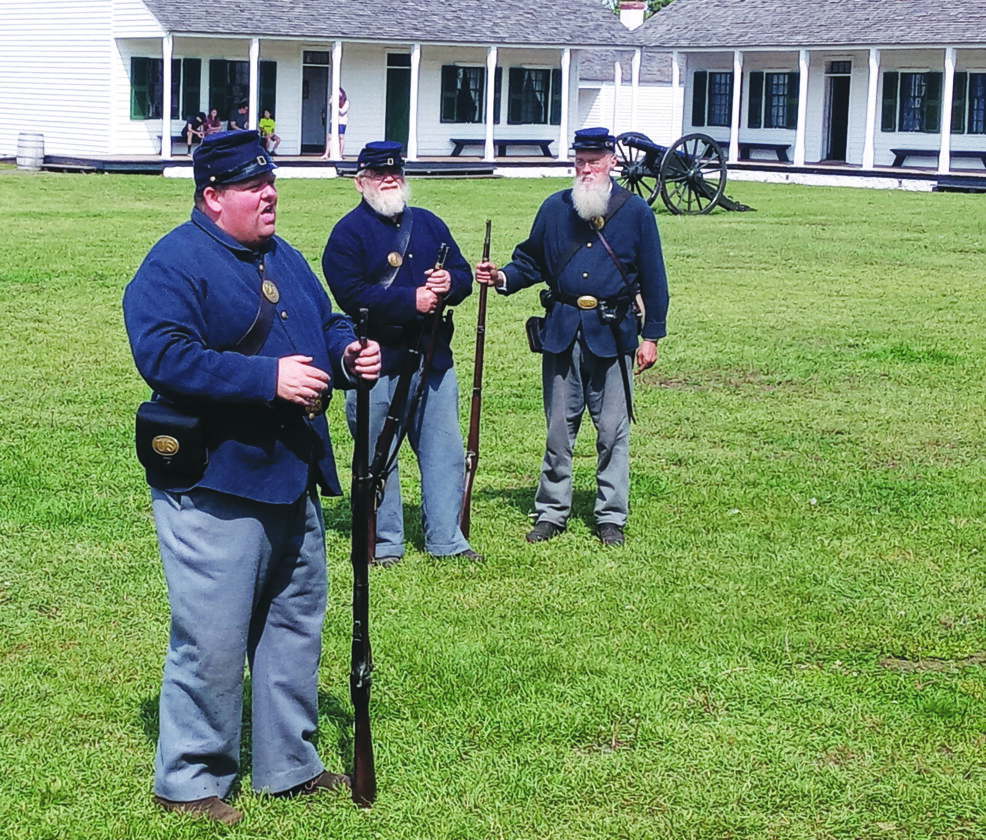Fort Wilkins upgrade
New Stockade in the works

Graham Jaenig/Daily Mining Gazette. Civil War reenactors seen in this 2024 photo at Fort Wilkins State Park.
COPPER HARBOR – Fort Wilkins opened a new exhibit last week telling the story of its 100 years as a state park. The exhibit was intended to be completed in 2023, but due to budgetary constraints and material costs, the project was delayed for two years. With the new exhibit complete, a project for next year is already in progress.
“This upcoming season we’re looking at repairing and replacing the entire stockade. Over 900 cedar posts that nine feet tall and about a foot in diameter,” said Barry James, administrator at the Michigan Iron Industry Museum in Negaunee and the historical exhibits and interpretation at Fort Wilkins. “The order has been made, the posts will need to cure for several months, so we’re looking at that installation in 2026.”
A few of the original posts from 1844 still exist and are in storage, James said. “The ones on display now date to the WPA and 1941, including the current stockade now that surrounds the fort.”
Fort Wilkins State Park is more than the fort/ museum. The park comprises 1,000 acres and is also home to a lighthouse, built in 1866, that is open to the public, a range light built in 1869 along with two campgrounds.
The fort, with 19 buildings situated between the two campgrounds, has a living history program provided by the Michigan History Center during the summer.
Starting in August, 2024, the west loop of the campground closed for the construction of a new toilet and shower building. The building it is replacing, James said, was constructed in 1964. The west loop is scheduled to reopen this month.
Built in 1844, the fort was not used long. Two years after the military post was constructed, its troops were withdrawn and sent to Jefferson Barracks, in Missouri, to prepare for their participation in the Mexican-American War. The fort then sat, all but forgotten, until 1868, when it was again re-garrisoned by two companies of the Second Reserve Corps. The corps was composed of men who had been wounded during the Civil War, but could still function in non-combat roles. In 1870, the fort was again abandoned. No longer wanted as a military installation the fort was transferred to the U.S. Department of Interior, who retained ownership until 1921, when Houghton and Keweenaw counties worked together to purchase the property for $2,000, which included the range light and the lighthouse on Hays’ Point.
The property was then given to the state of Michigan for use as a state park. The Work Projects Administration began restorations to the buildings in the early 1930s and further restoration, expansion and work was conducted in the 1960s.
Today, Fort Wilkins State Park tells a story of a significant period of expansion in American history. In addition to being a well-preserved example of 19th century life on the Northern Frontier, it also preserves the early maritime history of Lake Superior.





